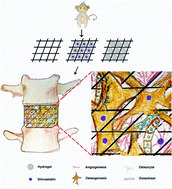3D printed porous titanium cages filled with simvastatin hydrogel promotes bone ingrowth and spinal fusion in rhesus macaques
Abstract
Three-dimensional (3D) printing technology can be used to manufacture implants with individualized external shapes, internal porous structures and elastic moduli similar to those of natural bone, although such implants lack biological activity. Here, we developed a porous titanium cage by electron beam melting that was filled with simvastatin/poloxamer 407 hydrogel and evaluated bone ingrowth and spinal fusion. Six adult male rhesus macaques underwent interbody fusion of the L3/4 (cage without simvastatin or hydrogel), L4/5 (cage with 0.5 mg simvastatin in hydrogel) and L5/6 (cage with 0 mg simvastatin in hydrogel) segments. 18F-NaF PET/CT imaging confirmed that simvastatin/poloxamer 407 hydrogel increased bone blood flow, osteoblastic activity and bone ingrowth; histological analysis demonstrated that simvastatin/poloxamer 407 hydrogel promoted bone ingrowth in and osseointegration around the L4/5 cages; and biomechanical analysis verified that simvastatin/poloxamer 407 hydrogel enhanced spinal fusion. We conclude that 3D-printed porous cages containing simvastatin hydrogel promote bone ingrowth and spinal fusion, which could be a convenient and promising method for clinical translation. Using PET/CT to monitor the osteoblast activity may provide a new method for assessing the intervertebral fusion effect in preclinical study or clinical postoperative evaluation.



 Please wait while we load your content...
Please wait while we load your content...